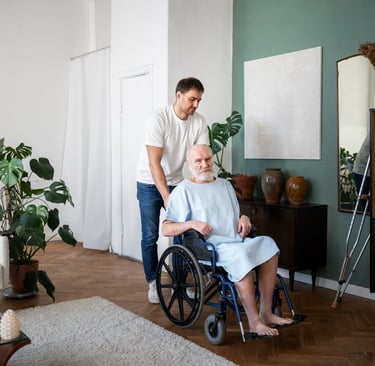Aging in place - home modifications, assistive technologies and care solutions for senior living
Enabling Independent Living at Home as We Age


As medical advancements help us live longer lives, aging populations worldwide are driving a rise in the number of elderly citizens who wish to continue living independently at home rather than move to assisted living facilities. According to a recent United Nations report, the population of people aged 60 and above is expected to double between 2017 and 2050.
With this demographic shift, supporting aging in place through home modifications, assistive technologies and tailored care services is becoming increasingly important. Here are some key ways elderly individuals can continue living comfortably and safely in the comfort of their own homes well into their senior years.
Home Modifications for Safety and Mobility
Making simple changes to the home environment can go a long way in helping seniors navigate their living spaces with ease. Installing grab bars in bathrooms, ramps at entryways, and railings on staircases helps prevent slips and falls - a major cause of injuries among the elderly.
Opting for slip-resistant flooring, improving lighting with motion-sensor lights, and clearing out clutter and cords that pose trip hazards also enhances safety. Lever-style door handles that are easier to use than regular knobs are another helpful modification.
For those with mobility issues, consider adjustments like a walk-in shower conversion instead of a bathtub. This allows barrier-free access. If sleeping upstairs poses difficulties, setting up a bedroom on the ground floor can provide convenient living quarters.
Assistive Technologies for Daily Tasks
Digital devices and smart home tools today offer innovative ways to support independent living for seniors facing age-related physical limitations. Medication dispensers with reminders and automatic pill organizers help with medication adherence.
Sensor-based fall detection systems provide 24/7 monitoring and alert caregivers in case of a fall incident. Motion-activated or voice-controlled lights, door locks and thermostats create a user-friendly environment.
Smart appliances like voice-controlled coffee makers and microwaves simplify cooking tasks. Video doorbells allow seeing visitors on the phone without having to get to the door. GPS-enabled devices keep track of those with cognitive issues who may wander.
Home Care Services for Daily Assistance
For tasks that require physical assistance, in-home care services provide reliable support. Home health aides can help with bathing, dressing, meal preparation, light housekeeping and companionship on a daily, weekly or live-in basis based on the individual's needs.
Certain medical tasks like medication reminders, wound care, catheter and ostomy maintenance are best handled by trained home health professionals like nurses. Therapists also provide in-home physical, occupational and speech therapy to maintain mobility and function.
Companion and personal care services are invaluable for those who may need accompaniment to doctor visits or for errands, transportation, recreational activities and social interaction to alleviate loneliness or isolation. Remote patient monitoring technologies now allow caregivers to check vitals and symptoms from a distance as well.
Community Support Programs for Additional Resources
Beyond home modifications and professional care services, local community support programs play a key role in helping seniors age in place successfully. Many municipalities offer handyman services for minor home repairs.
Transportation services provide non-emergency medical transportation to appointments. Neighborhood watch groups and senior centers foster social engagement and a sense of community. Meals on Wheels deliver nutritious meals for those unable to cook.
Legal and financial planning resources help with important paperwork like advance medical directives, powers of attorney, wills and Medicaid applications. Telehealth options expand access to healthcare consultations. Together, these multi-level support systems enable independent senior living.
With the right combination of home adjustments, digital aids, professional assistance and community involvement, aging at home remains a safe and viable option for seniors seeking independence, comfort and quality of life in their later years. As our population ages, innovative solutions will continue improving independent living experiences for the elderly.
